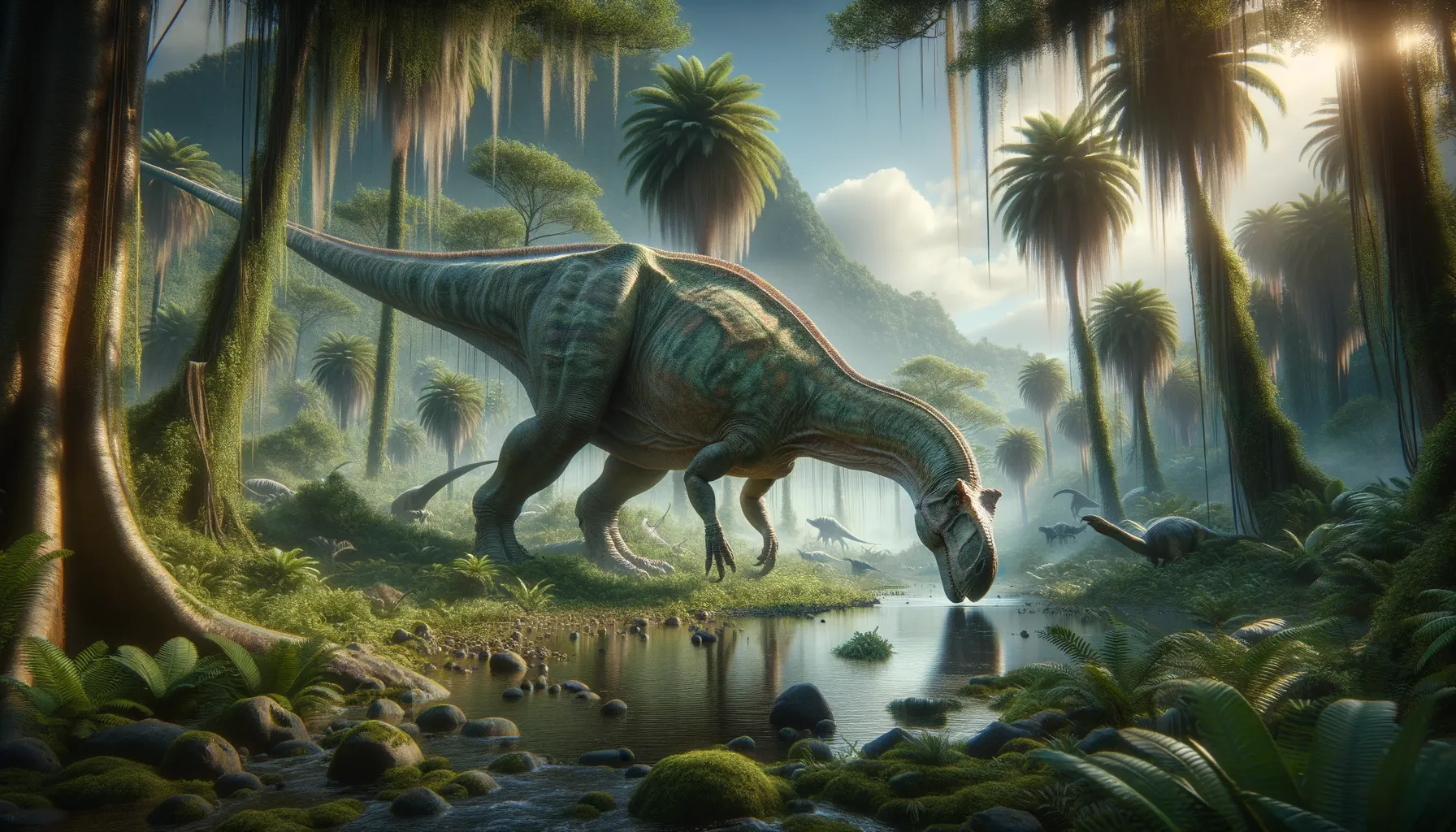
Uintasaurus
Grazing giant of the ancient Uinta Basin.
Period
Cretaceous
Length
Up to 60 feet long.
Height
Approximately 20 feet tall.
Weight
Around 5 to 8 tons.
Uintasaurus was a massive herbivorous dinosaur that roamed the Earth during the Late Cretaceous period. Known for its impressive size and long neck, it grazed the lush vegetation of its time. This gentle giant was part of a diverse ecosystem, playing a crucial role in its habitat. With a fossil record found in North America, Uintasaurus continues to be a subject of fascinating paleontological studies today.
Diet
Uintasaurus was herbivorous, primarily feeding on low-lying plants. Its long neck allowed it to reach a variety of foliage, giving it access to abundant food sources. This diet was crucial for sustaining its large size.
Hunting
As a herbivore, Uintasaurus did not hunt other animals. Instead, it spent much of its time searching for and consuming plants. Its massive body and powerful legs were more suited for foraging than pursuing prey.
Environmental challenges
Uintasaurus faced challenges from climate fluctuations and natural predators. These environmental factors influenced its foraging patterns and survival strategies. Over time, changes in vegetation and ecosystem dynamics shaped its habitat. Adaptations in anatomy helped Uintasaurus navigate these challenges.
Speed
Uintasaurus was likely slow-moving due to its large size.
Lifespan
Estimated to live for several decades.
First discovery
Discovered in the 1920s in the Uinta Basin.
Fun Facts
- Uintasaurus is named after the Uinta Mountains in the western United States, where its fossils were found.
- This dinosaur lived during the Late Jurassic period, which was about 150 million years ago.
- Uintasaurus was a plant-eater, or herbivore, spending its time munching on the lush vegetation of its era.
- It was a sauropod, a group of long-necked dinosaurs known for their massive size and long tails.
- Uintasaurus had a long neck that helped it reach vegetation high up in trees, much like a giraffe today.
- Despite its massive size, Uintasaurus likely moved in herds for protection and social interaction.
- Scientists believe that Uintasaurus used its long tail as a weapon to defend against predators.
Growth and Development
Uintasaurus experienced rapid growth during its early years to reach its massive size. The long bones continued to grow until it reached adulthood, while the skull and other features fully developed. Throughout its life, food availability played a crucial role in its growth and health.
Habitat
Uintasaurus thrived in a lush, forested environment with abundant plant life. Its habitat likely included diverse landscapes, such as floodplains and woodlands. The availability of water sources and vegetation was essential for its sustenance. Environmental changes over time influenced its habitat selection and migration patterns.
Interaction with other species
Uintasaurus coexisted with a variety of other dinosaur species, sharing resources and space. As a large herbivore, it faced predation threats from carnivorous dinosaurs. It may have formed groups for protection and efficient foraging. These interactions contributed to the dynamic ecosystem of the Late Cretaceous period.
Natural lifespan
Uintasaurus is thought to have naturally lived for several decades.
Reproduction
Uintasaurus reproduced by laying eggs, typical of large herbivorous dinosaurs. Nesting sites were likely chosen carefully to ensure the safety of eggs. Parental care might have been limited, with hatchlings being relatively independent after birth. Environmental factors influenced reproductive success and offspring survival.
Social behaviour
Uintasaurus may have lived in herds, providing protection against predators. Such social structures helped in resource sharing and group defense. Communication likely involved visual signals and possibly vocalizations. These behaviors contributed to the survival of the species in its complex ecosystem.
Fossil locations
Fossils of Uintasaurus have been found primarily in the Uinta Basin. This area has yielded many significant discoveries, offering insights into the ecosystem it inhabited. Continued excavations in the region enhance our understanding of its distribution. Paleontologists study these fossils to unravel the mysteries of its history.
